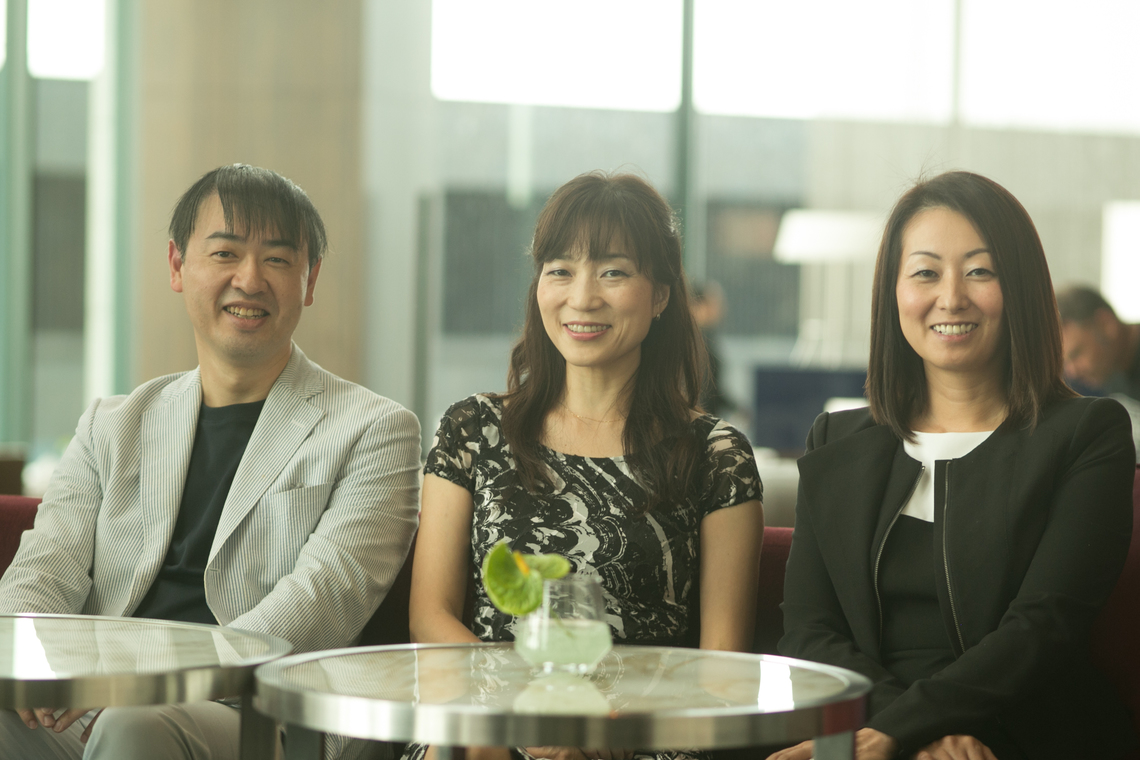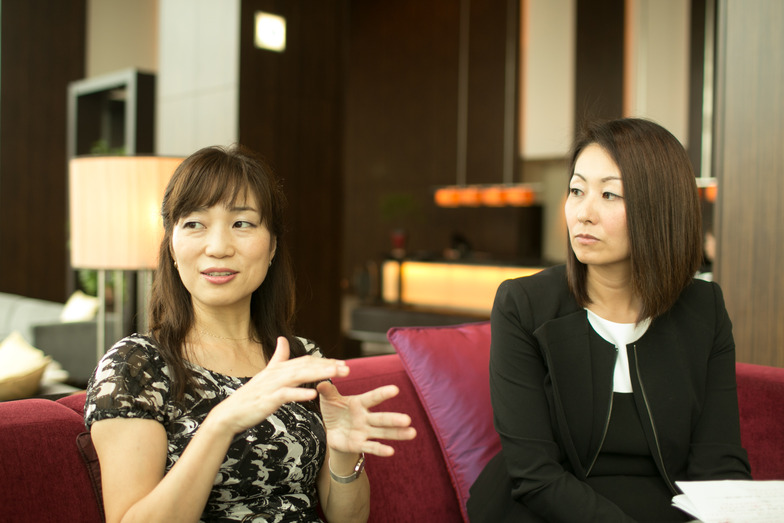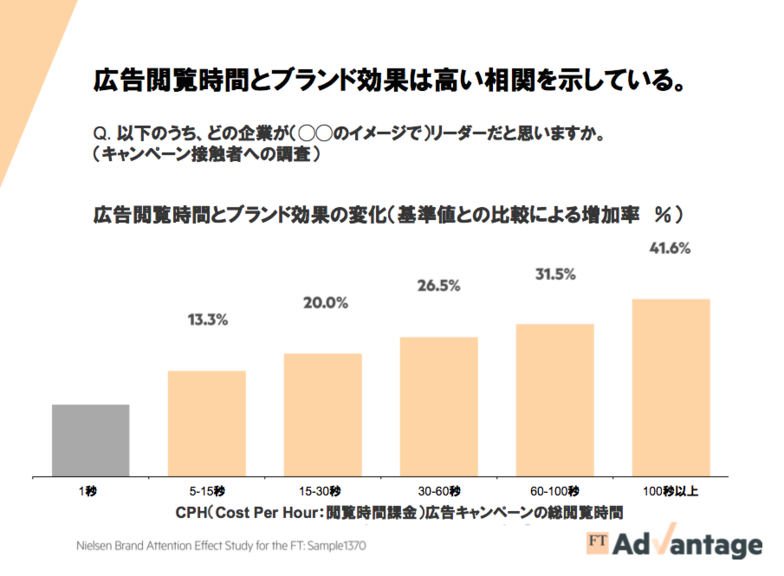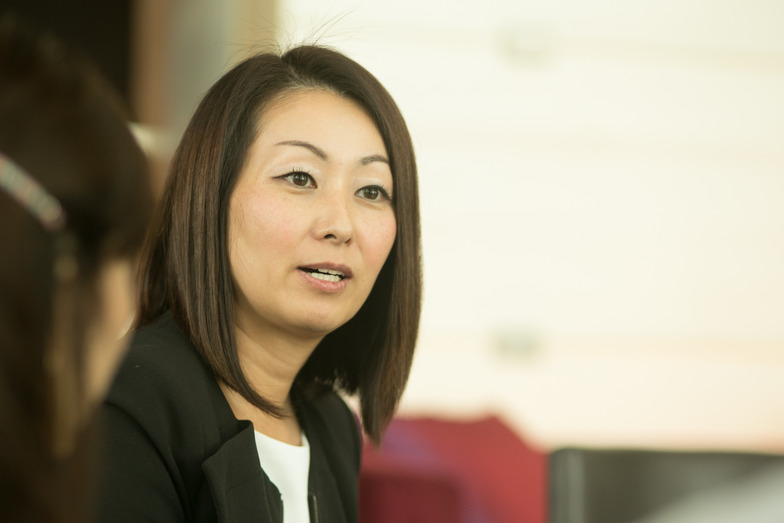Continuing from last time, we'll discuss the future of media that builds brands with two representatives from digital media companies accelerating proactive digital strategies.

From left: Keisuke Konishi (Dentsu Inc.), Motoko Imada (Infobahn/Media Gene), Yuko Hoshino ( Financial Times )
How can digital media contribute to branding?
Konishi: Now, please tell us about your initiatives and strategies as an advertising medium. One challenge with digital media is that because effectiveness can be measured numerically, metrics like CPM and CTR became the primary goals. This led to banner ads being judged solely on efficiency, trapping them in a vicious cycle of cost competition. As a result, both advertisers and media realized digital had become incapable of branding. Since then, I believe we've seen a reevaluation of advertising approaches for branding, such as native advertising and video.
Hoshino: As an advertising medium, FT is uniquely positioned to drive innovation by leveraging its specialization and niche focus. This stems from its strong foundation of readers who follow its unique initiatives and brand advertisers. Recently, it has enhanced its media-specific advertising value through efforts like serving ads based on article semantic analysis (understanding article meaning to deliver relevant ads, not just keyword matching) and achieving results by charging CPH (Cost Per Hour: based on ad viewing time) instead of CPM (Cost Per Mille: cost per thousand impressions). While simple banner ads rely heavily on ad content for effectiveness, making CTR (Click-Through Rate) guarantees difficult, native ads like semantic analysis can offer up to four times the guarantee. This demonstrates how our proprietary matching technology can elevate our value as a media platform.
Konishi: "Viewability" (how much of an ad is actually displayed in a viewable state) has recently become a critical issue for digital media. FT's newly launched CPH billing addresses this. Actual data verification also shows a highly interesting correlation between CPH and brand lift metrics like brand awareness and interest (see figure). Fundamentally, even with analog media, how long ads are actually viewed hasn't really been verified. Digital media, while still in a transitional growth phase, is also creating new metrics.
Imada: In our case, we've honestly been shifting away from display advertising for some time now, focusing primarily on content marketing for the past 3-4 years. This shift came especially after the ad tech wave hit and we adopted third-party ad delivery. This decoupled the brand value of media from its ad slots, reducing them to mere inventory with falling CPMs and plunging media into a cost competition. However, content marketing presented its own hurdles: the hassle of creation and the difficulty of setting KPIs. We've tried various approaches like attribution analysis (measuring contribution as indirect effects by analyzing all touchpoints, not just direct reactions/actions from media exposure) and brand lift measurement. Recently, we started proposing not just content development, but adding a recommendation network—including external media—to sponsored posts on our own media. This has finally yielded a successful model, driving actual product movement both online and in-store.

Konishi: I see. So, by consistently providing services from content creation to external media distribution, maximizing reach and efficiency, you've enhanced effectiveness. In that sense, the synergy between running both Infobahn (content businesses like owned media) and Media Gene (media businesses) is being effectively leveraged.
Imada: While Infobahn and Media Gene originally operated independently, the growing demand for content-centric triple media strategies (owned, earned, and paid media) has made collaboration crucial—especially for media distribution and recommendations of developed content. Our recent transition to a holding company structure also aims to strengthen these synergies.
The low cost of smartphone ads stems from the outdated "ad slot" mindset
Konishi: Regarding recent challenges in digital media, the shift to smartphones demands changes in media and ad formats, while ad rates are trending downward. How are you addressing this?
Imada: In that regard, content marketing is advantageous because pricing remains consistent across smartphones. It focuses on enhancing the value of the content itself, not just media slots. I believe content will become even more crucial as we consider countermeasures against the risk of ad blockers (technology that blocks ads) becoming more widespread.
On the other hand, there are various approaches to responsive design (design that optimizes display for different screens). While consolidating sites is better for Google search compatibility, I think separating them can sometimes be better for the media user experience.
Hoshino: Regarding FT's mobile media strategy, we plan to unify ad rates across mobile and desktop screens. This means we'll offer advertising based on the concept of purchasing viewing time in hours, leveraging C-class audience data regardless of the media platform. The value of audience data is equal; it's about data quality, not ad display size. Simultaneously, by discontinuing Flash and transitioning to full HTML compatibility, we'll enable unified delivery across smartphones and computers.
Konishi: Indeed, the lower cost of smartphone ads due to smaller display sizes is a vestige of the outdated "ad slot" mentality. Leveraging audience data is an essential strategic perspective for digital media.
Now, media companies possess strengths and assets like brand, distribution platforms, customer bases, and content. Where do you see growth potential moving forward?
Media companies that don't leverage DMPs have no future.
Hoshino: For FT, customer data is the most valuable asset. To control ad tech from a media-led perspective, we also have an in-house DSP desk. We layer FT's customer data to extend reach to FT users on other websites. Advertisers can select segments, pay a data fee, and efficiently target users on other sites, optimizing delivery costs. This improves cost efficiency and avoids lost-in-network scenarios (where you don't know who your ads are reaching).
Imada: I agree. Media outlets will struggle to survive without implementing their own DMPs going forward. Unfortunately, few existing publishers have adopted them yet. I believe media companies must leverage their own audience data; otherwise, they'll just be selling ad space and won't be able to enhance their media value.
Ultimately, when using ad tech, we shouldn't just be used by it. Media should take the lead in using ad tech to enhance their brand value.
Konishi: So, holding customer assets and marketing data is the lifeline for enhancing media value going forward.
Regarding how to maximize the value generated by customer assets, I believe there are many more approaches. For example, platforms like NewsPicks are creating new media value by engaging users—forming reader communities and leveraging reviewers to create secondary ripple effects of information.
Hoshino: That's interesting. Reviews appear before the article, and reading them makes you want to read the news article itself. In the case of the FT, the information ripple effect from individual writers like renowned columnists also serves as a differentiating factor.
Beyond "Stealth Marketing": The Shape of Brand-Media Partnerships
Konishi: Recently, "stealth marketing" (stealth advertising) without sponsor disclosure has become problematic. Adhering to industry rules is the bare minimum. Beyond that, whether the output is advertising or article content, what matters is how brands leverage their expertise in the relevant category to enhance informative value for customers. Whereas value was previously delivered primarily through products or services, the potential to connect directly with customers and provide value to users through content has greatly expanded. While attention to owned media is growing in this way, from this strategic perspective, leveraging the power that media possesses is becoming even more important, isn't it?
Imada: I believe brands and media are closer than ever before. It's not simply about buying media to strengthen owned media strategies. Rather, the significance and role of content publishers—objective, specialized media with reader engagement—seems to be growing. Native advertising has been a hot topic in the media industry recently, precisely because it's a way to leverage and grow their strengths. As publishers, we want to expand our content business.
Konishi: So you see opportunities expanding for partnerships between brands and media. By leveraging media's expertise and authority through advertising and content, we can create synergies that enhance corporate brand value. For digital media to contribute more to branding, I hope brand advertisers will also support nurturing media.
Hoshino: Exactly. FT aims to further expand initiatives that create value alongside brands by leading innovations that enhance our own media value. Personally, I hope Japanese brand advertisers will challenge themselves more and not hesitate to embrace new approaches.
Konishi: Thank you very much for today's extremely valuable discussion.









